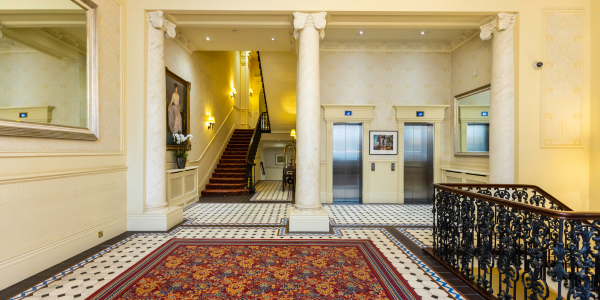As a building manager, you are no doubt aware of just how useful a building management system (BMS) can be. But did you know that it’s also vital that the system stays up-to-date with changes both within the building and the outside world?
A building management system can be used to simultaneously control mechanical and electrical equipment, including heating, ventilation, air conditioning, lighting, power and security systems. In addition, it can data log a building’s environmental conditions and subsequent metering solutions.
Key features of any BMS system should include the following:
- Fault detection & diagnostics with insight
- Automated controls
- Comprehensive reporting
- User interface for mobile devices
However, it’s important to check that your building management system has also been programmed with your business needs in mind and is able to provide a continually evolving service which can keep up with the ever-changing times. Here we look at the reasons why modernising your building management system is key.
1. Protection from cyber attacks
As building management systems have become more complex, so they have become more vulnerable to cyber-attacks, and the nature of those attacks and the tools used to unleash them have become more sophisticated.
Making sure that your system is properly maintained, updated to the latest standards and managed well will give you the peace of mind that your BMS is protected from cybersecurity attacks, such as malware, ransomware, Denial of Service (DoS) attacks, data breaches and cyber fraud.
2. Enabling remote use
Being able to remotely operate your building management system has become more important in light of the COVID-19 pandemic, which left many people working from home.
Remote operation of a building management system allows building managers and owners to respond quickly and adapt to any changes within the building (such as turning the heating off in unused rooms), at any time of the day or night. It’s vital that anyone who is using the controls is also fully trained on how to use them correctly.
3. Optimum occupant comfort
When a building management system has the flexibility to adapt to changing requirements it makes it easier to ensure the comfort of the occupants.
For example, temperature settings need to change throughout the year and air quality always needs to be at a level that is safe to breathe. The good news is that sensor arrays can be installed within commercial buildings to monitor air quality and general occupancy levels, and air volume management can be controlled.
By ensuring a comfortable working environment, you have every chance of increasing staff efficiency, making the building more appealing to potential tenants and helping businesses to meet their sustainability goals by reducing unnecessary energy use.
4. Making the most of energy saving
An out-of-date or underutilised BMS can be responsible for significant energy waste, making an unwelcome impact on your carbon footprint.
Building management systems are adapting to integrate with cloud-based environmental solutions to deliver a genuine reduction in energy usage, as well as logging the performance of your systems.
For building managers, reducing carbon production has never been so important and modern building management systems provide a range of powerful solutions to achieve that goal.
Cube Controls is at the forefront of integrating these systems. If you’d like to learn more about modernising your building management system, get in touch today.
Cube Controls is an established and experienced supplier of Building Management Systems, specialising in the design and set up of bespoke environmental and energy control programmes for commercial buildings and property.
To find out how Cube Controls can support you at all stages of design and consultancy, installation and modification and maintenance of your building management systems contact our expert and friendly team on 01903 694279 or sales@cubecontrols.co.uk.




